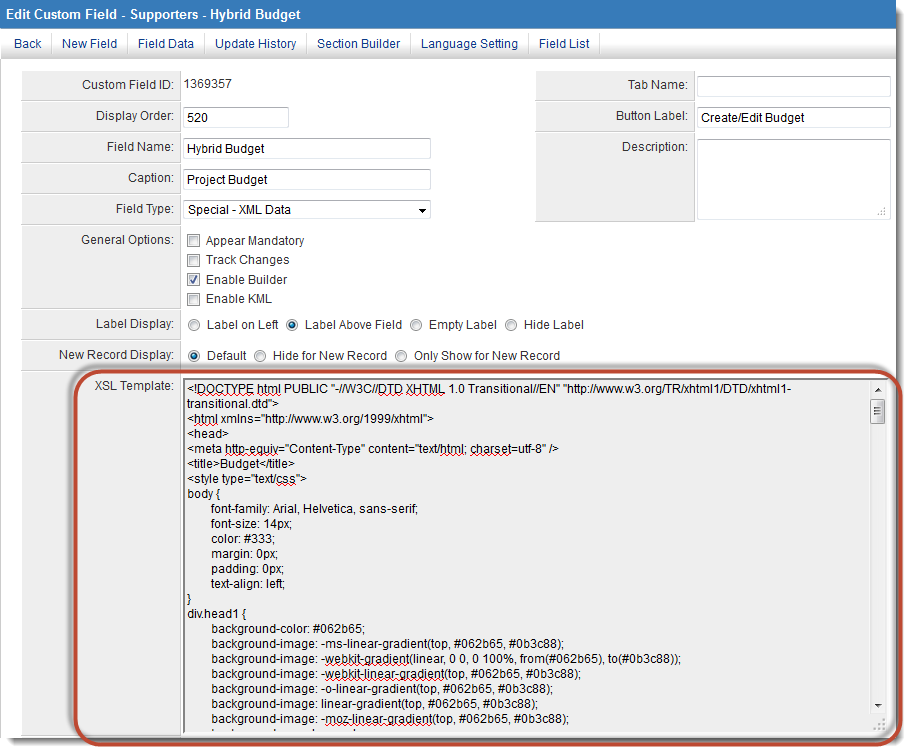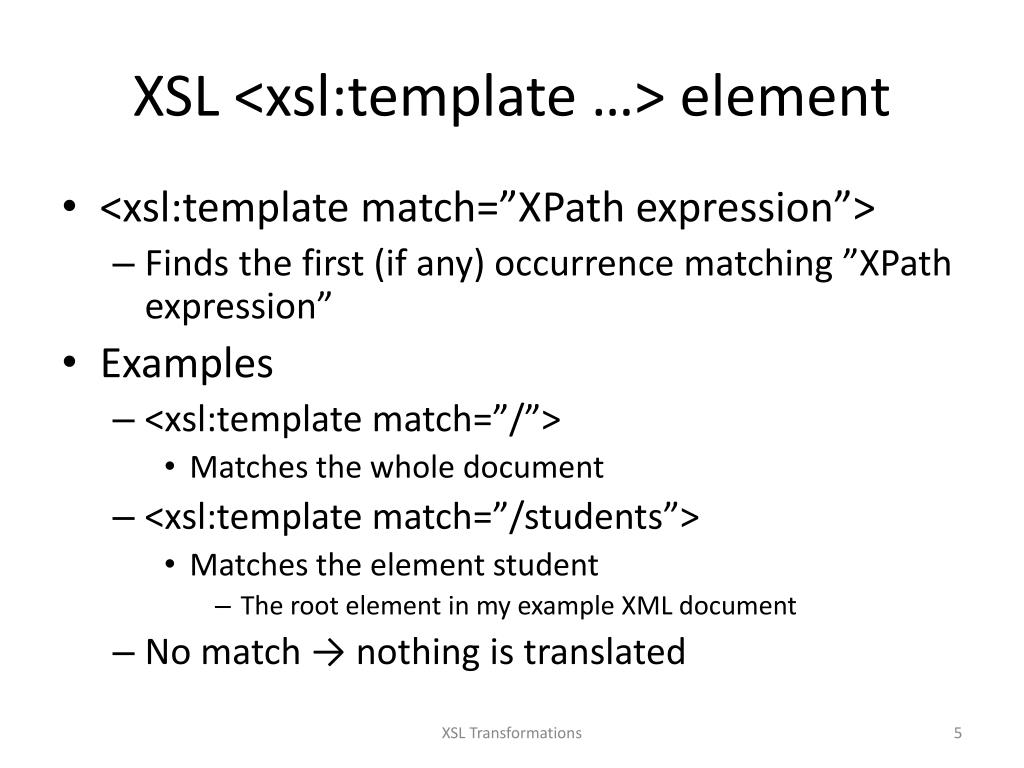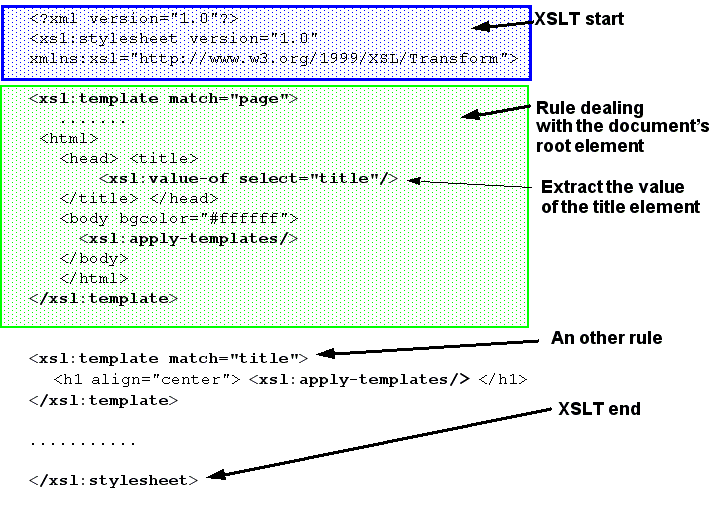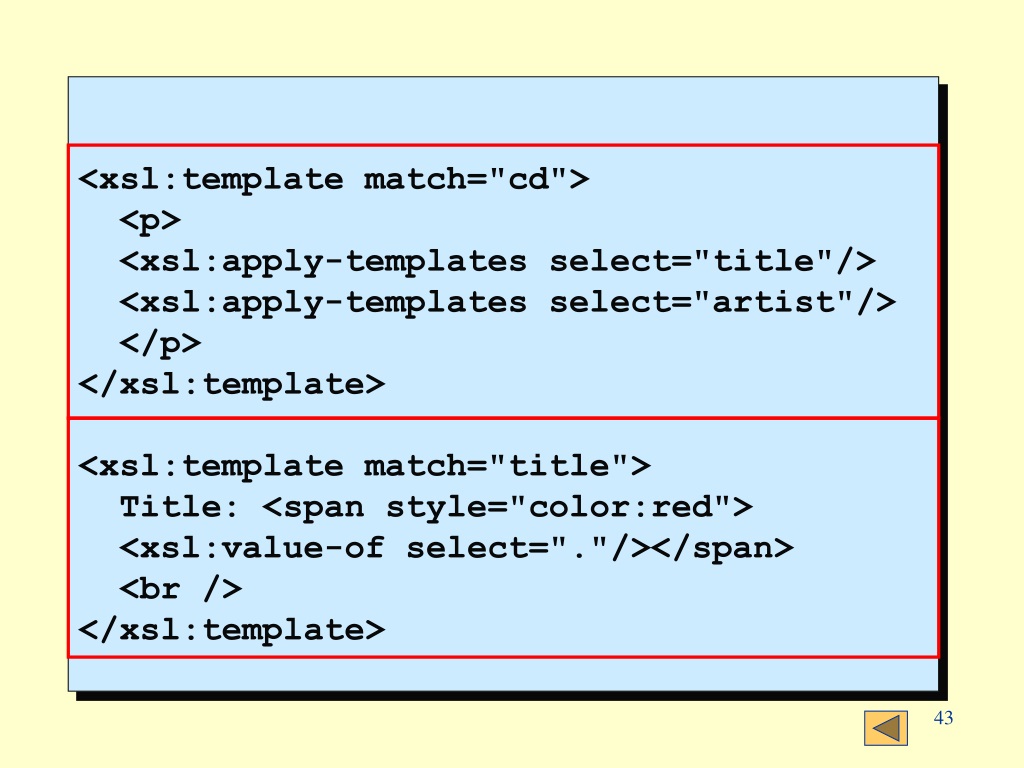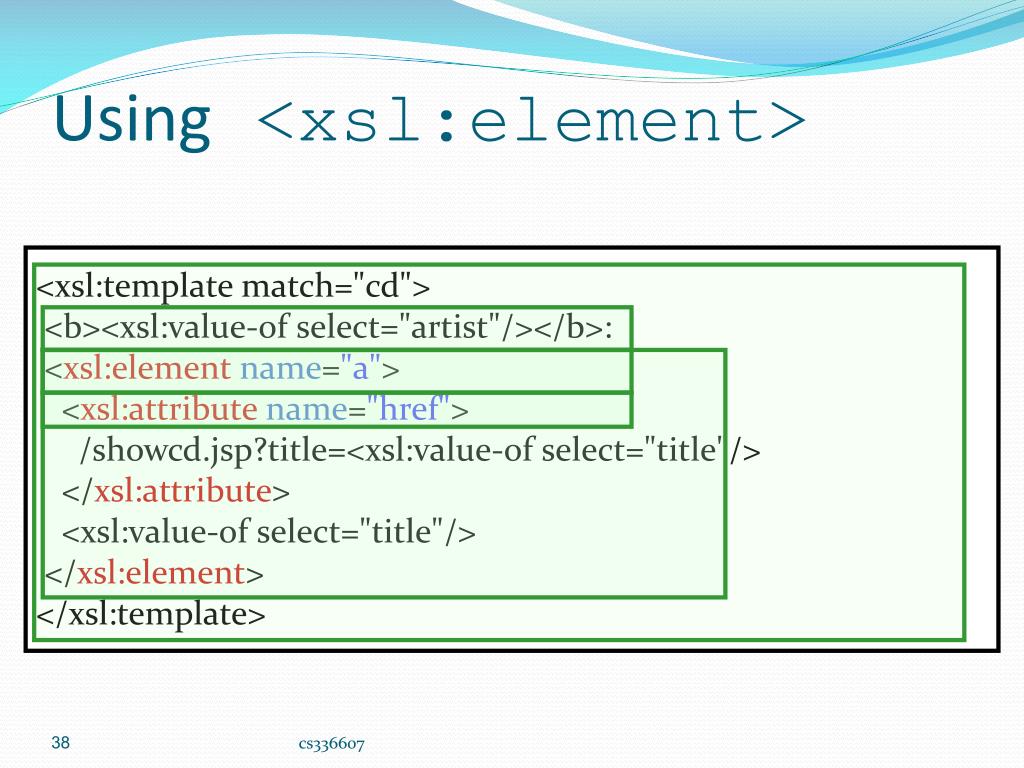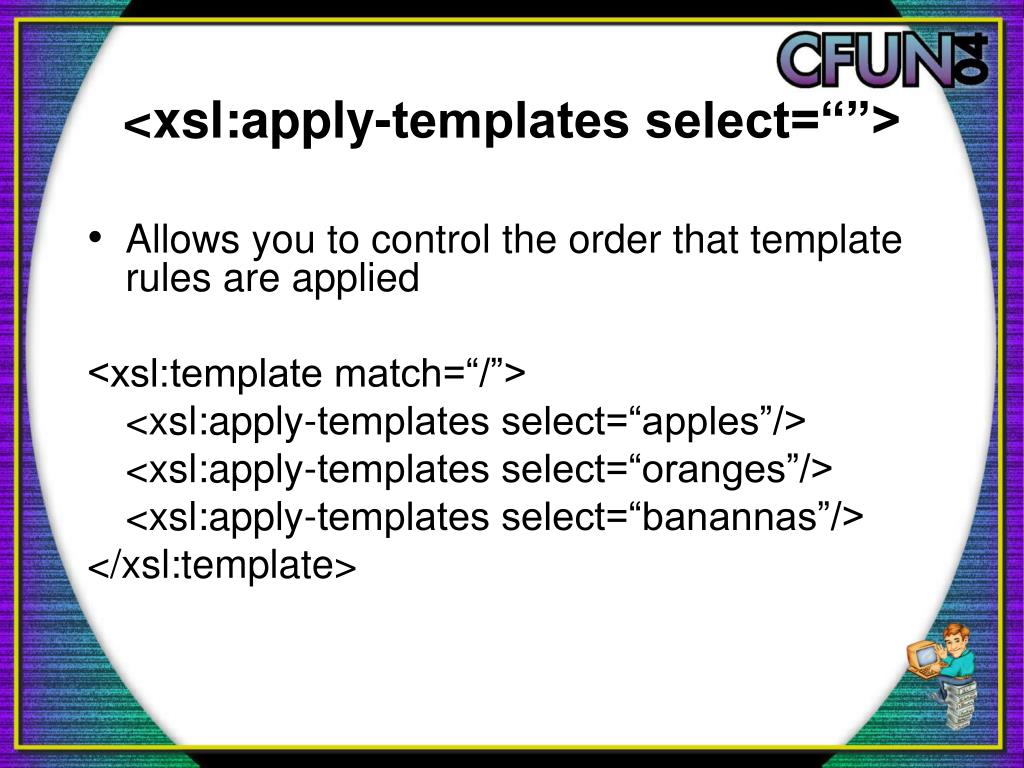Following is the syntax declaration of. The xsl:template element contains the @match attribute that contains a matching pattern or xpath applied at the input nodes. Web defines a way to reuse templates in order to generate the desired output for nodes of a particular type/context. This element must have either the match attribute or the name attribute set. Web when it matches an xml node, the template is invoked by the processor.
Web the element contains rules to apply when a specified node is matched. Web i am trying to do a conditional match on an xml and to return the value from a sibling node. Web the element is used to build templates. Web match</strong>=/> this then allows you to define a template for each element you are interested in and process the. The match attribute can also be used to.
Web defines a way to reuse templates in order to generate the desired output for nodes of a particular type/context. Following is the syntax declaration of. Web the element defines an output producing template. Web in essence, an xslt stylesheet is a set of rules, called templates, which declare that any node that matches this specific pattern should be manipulated in this. Web the element applies a template to the current element or to the current element's child nodes.
Web the element contains rules to apply when a specified node is matched. Web the element defines an output producing template. Web match</strong>=/> matches only the document root itself, and sets it as the context. Web when it matches an xml node, the template is invoked by the processor. Web xslt element is a basic building block in xslt and it provides a way to define rules for transforming specific elements into a source xml document. Web the solution is simple: Web the element selects a set of nodes in the input tree and instructs the processor to apply the proper templates to them. Following is the syntax declaration of. The match attribute can also be used to. This element must have either the match attribute or the name attribute set. The match attribute is used to associate the template with an xml element. If we add a select attribute to the.</p> Web the element is used to build templates. This element must have either the match attribute or the name attribute set. Match</strong>> matches the root node of the source document.
I Would Like To Match On The Records Which Have The Attribute Of Gender.
This will match and discard all.</p> @* matches any attribute node, and node() matches any other kind of node (element, text node, processing instruction or comment). This element must have either the match attribute or the name attribute set. Web the xsl:template element defines an output producing template.
Web Xslt Element Is A Basic Building Block In Xslt And It Provides A Way To Define Rules For Transforming Specific Elements Into A Source Xml Document.
Match> matches the root node of the source document. Web defines a way to reuse templates in order to generate the desired output for nodes of a particular type/context. Web the solution is simple: The xsl:template element contains the @match attribute that contains a matching pattern or xpath applied at the input nodes.
Web The Element Applies A Template To The Current Element Or To The Current Element's Child Nodes.
Web when it matches an xml node, the template is invoked by the processor. The match attribute can also be used to. This element must have either the match attribute or the name attribute set. Web match</strong>=/> matches only the document root itself, and sets it as the context.
Web The Element Contains Rules To Apply When A Specified Node Is Matched.
Following is the syntax declaration of. Web how do i match on any node that itself or any child has an attribute with a value in xslt template? Web in essence, an xslt stylesheet is a set of rules, called templates, which declare that any node that matches this specific pattern should be manipulated in this. Web the element is used to build templates.
